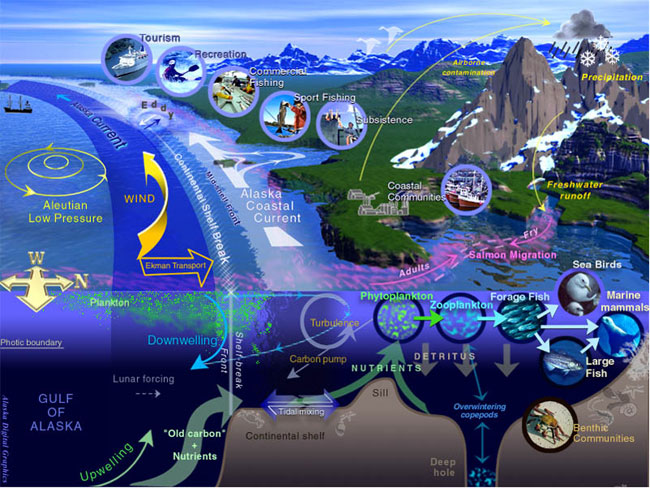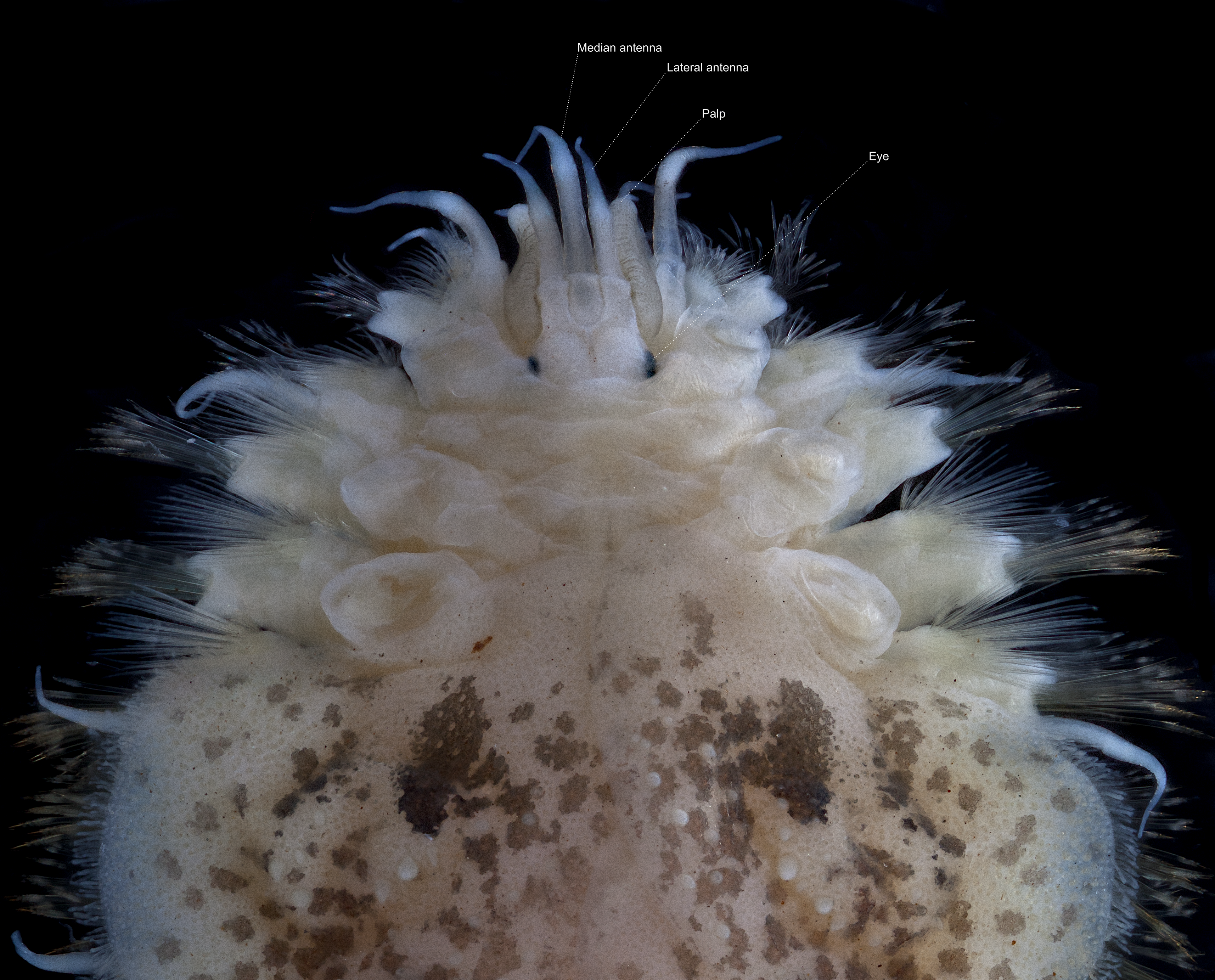|
Rhodininae
Rhodininae is a subfamily of marine polychaete worms in the family Maldanidae. Description Rhodininae worms are characterized by a lack of cephalic and pygidial plates, the presence of posteriorly directed collars in the posterior chaetigerous segments in at least one genus, a short low keel formed by the prostomium, acicular spines in notochaetae, absence of neurochaetae in a number of anterior chaetigers, presence of a double row of terebelloid uncini on some chaetigers, subrostral (i.e. below the rostrum) processes without barbules, an indeterminate number of chaetigers, and a conical pygidium. Classification The subfamily contains 3 genera and 10 species. *''Rhodine ''Rhodine'' is a genus of capitellid segmented worms in the family Maldanidae Maldanidae is a family of more than 200 species of Marine life, marine polychaetes commonly known as bamboo worms or maldanid worms. They belong to the order Capitel ...'' – 7 species *'' Boguea'' – 2 species *'' Boguella' ... [...More Info...] [...Related Items...] OR: [Wikipedia] [Google] [Baidu] |
Maldanidae
Maldanidae is a family of more than 200 species of marine polychaetes commonly known as bamboo worms or maldanid worms. They belong to the order Capitellida, in the phylum Annelida. They are most closely related to family Arenicolidae, and together form the clade Maldanomorpha. Morphology Maldanid worms have a long and cylindrical body that usually bends at one or both ends. It can be divided into four parts: 1) a head, formed by a dorsally positioned prostomium that is fused to the peristomium, sometimes with a flattened cephalic plate; 2) a thorax, formed by the first four chaetigers (i.e. chaetae-bearing segments), usually with strong spines; 3) an abdomen, with several longer chaetigers that are often followed by a number of achaetous (i.e. without chaetae) segments; 4) a posterior end, with a pygidium that contains the anus. The maldanid pygidium takes a wide variety of forms such as conical, plate-shaped and funnel-shape. Sometimes a few prepygidial (i.e. anterior to the ... [...More Info...] [...Related Items...] OR: [Wikipedia] [Google] [Baidu] |
Rhodine
''Rhodine'' is a genus of capitellid segmented worms in the family Maldanidae Maldanidae is a family of more than 200 species of Marine life, marine polychaetes commonly known as bamboo worms or maldanid worms. They belong to the order Capitellida, in the phylum Annelida. They are most closely related to family Arenicolidae .... Morphology ''Rhodine'' worms have a head with a transverse ridge on the posterior part of their peristomium; their neurochaetae begin on the fifth chaetiger (i.e. any segment with chaetae); they present double rows of uncini in median and posterior chaetigers; they have an indeterminate number of chaetigers; and their posterior segments have posteriorly directed collars. References External links {{Annelid-stub Annelid genera Polychaete genera ... [...More Info...] [...Related Items...] OR: [Wikipedia] [Google] [Baidu] |
Marine Life
Marine life, sea life, or ocean life is the plants, animals and other organisms that live in the salt water of seas or oceans, or the brackish water of coastal estuaries. At a fundamental level, marine life affects the nature of the planet. Marine organisms, mostly microorganisms, produce oxygen and sequester carbon. Marine life in part shape and protect shorelines, and some marine organisms even help create new land (e.g. coral building reefs). Most life forms evolved initially in marine habitats. By volume, oceans provide about 90% of the living space on the planet. The earliest vertebrates appeared in the form of fish, which live exclusively in water. Some of these evolved into amphibians, which spend portions of their lives in water and portions on land. One group of amphibians evolved into reptiles and mammals and a few subsets of each returned to the ocean as sea snakes, sea turtles, seals, manatees, and whales. Plant forms such as kelp and other algae grow ... [...More Info...] [...Related Items...] OR: [Wikipedia] [Google] [Baidu] |
Polychaete Worm
Polychaeta () is a paraphyletic class of generally marine annelid worms, commonly called bristle worms or polychaetes (). Each body segment has a pair of fleshy protrusions called parapodia that bear many bristles, called chaetae, which are made of chitin. More than 10,000 species are described in this class. Common representatives include the lugworm (''Arenicola marina'') and the sandworm or clam worm ''Alitta''. Polychaetes as a class are robust and widespread, with species that live in the coldest ocean temperatures of the abyssal plain, to forms which tolerate the extremely high temperatures near hydrothermal vents. Polychaetes occur throughout the Earth's oceans at all depths, from forms that live as plankton near the surface, to a 2- to 3-cm specimen (still unclassified) observed by the robot ocean probe ''Nereus'' at the bottom of the Challenger Deep, the deepest known spot in the Earth's oceans. Only 168 species (less than 2% of all polychaetes) are known from fres ... [...More Info...] [...Related Items...] OR: [Wikipedia] [Google] [Baidu] |
Pygidium
The pygidium (plural pygidia) is the posterior body part or shield of crustaceans and some other arthropods, such as insects and the extinct trilobites. In groups other than insects, it contains the anus and, in females, the ovipositor. It is composed of fused body segments, sometimes with a tail, and separated from thoracic segments by an articulation.Shultz, J.W. (1990). Evolutionary Morphology And Phylogeny of Arachnida. Cladistics 6: 1–38. Chelicerates In arachnids, the pygidium is formed by reduction of the last three opisthosomal segments to rings where there is no distinction between tergites and sternites. A pygidium is present in Palpigradi, Amblypygi, Thelyphonida, Schizomida, Ricinulei and in the extinct order Trigonotarbida. It is also present in early fossil representatives of horseshoe crabs. Trilobites In trilobites, the pygidium can range from extremely small (much smaller than the head, or cephalon) to larger than the cephalon. They can be smooth, as ... [...More Info...] [...Related Items...] OR: [Wikipedia] [Google] [Baidu] |
Prostomium
The prostomium (From Ancient Greek, meaning "before the mouth"; plural: prostomia; sometimes also called the "acron") is the cephalized first body segment in an annelid worm's body at the anterior end. It is in front of (but does not include) the mouth, being usually a small shelf- or lip-like extension over the dorsal side of the mouth. The prostomium together with the peristomium, which includes the mouth and pharynx, make up the annelid head. Description The prostomium is part of the head and holds at least part of the brain and often bears sensory structures such as the eyes, antennae and palps. It may function like a kind of overlip when the animal is feeding. The prostomium bears many important taxonomic characters and its shape and composition are important for annelid systematics. In addition to the eyes, antennae and palps, the prostomium can possess appendages such as tentacles or cirri. Moreover, some polychaete Polychaeta () is a paraphyletic class of gener ... [...More Info...] [...Related Items...] OR: [Wikipedia] [Google] [Baidu] |
Notochaetae
A chaeta or cheta (from Greek χαίτη “crest, mane, flowing hair"; plural: chaetae) is a chitinous bristle or seta found in annelid worms, (although the term is also frequently used to describe similar structures in other invertebrates such as arthropods). Polychaete annelids, ('polychaeta' literally meaning "many bristles") are named for their chaetae. In Polychaeta, chaetae are found as bundles on the parapodia, paired appendages on the side of the body. The chaetae are epidermal extracellular structures, and clearly visible in most polychaetes. They are probably the best studied structures in these animals. Use in taxonomy and identification The ultrastructure of chaetae is fundamentally similar for all taxa but there is vast diversity in chaetal morphology. Moreover, chaetae bear precise characters for determination of species and taxonomic assessment. The shape, absolute and relative size, number, position, ornamentation and type are important taxonomic characters and ... [...More Info...] [...Related Items...] OR: [Wikipedia] [Google] [Baidu] |
Neurochaetae
A chaeta or cheta (from Greek χαίτη “crest, mane, flowing hair"; plural: chaetae) is a chitinous bristle or seta found in annelid worms, (although the term is also frequently used to describe similar structures in other invertebrates such as arthropods). Polychaete annelids, ('polychaeta' literally meaning "many bristles") are named for their chaetae. In Polychaeta, chaetae are found as bundles on the parapodia, paired appendages on the side of the body. The chaetae are epidermal extracellular structures, and clearly visible in most polychaetes. They are probably the best studied structures in these animals. Use in taxonomy and identification The ultrastructure of chaetae is fundamentally similar for all taxa but there is vast diversity in chaetal morphology. Moreover, chaetae bear precise characters for determination of species and taxonomic assessment. The shape, absolute and relative size, number, position, ornamentation and type are important taxonomic characters a ... [...More Info...] [...Related Items...] OR: [Wikipedia] [Google] [Baidu] |




